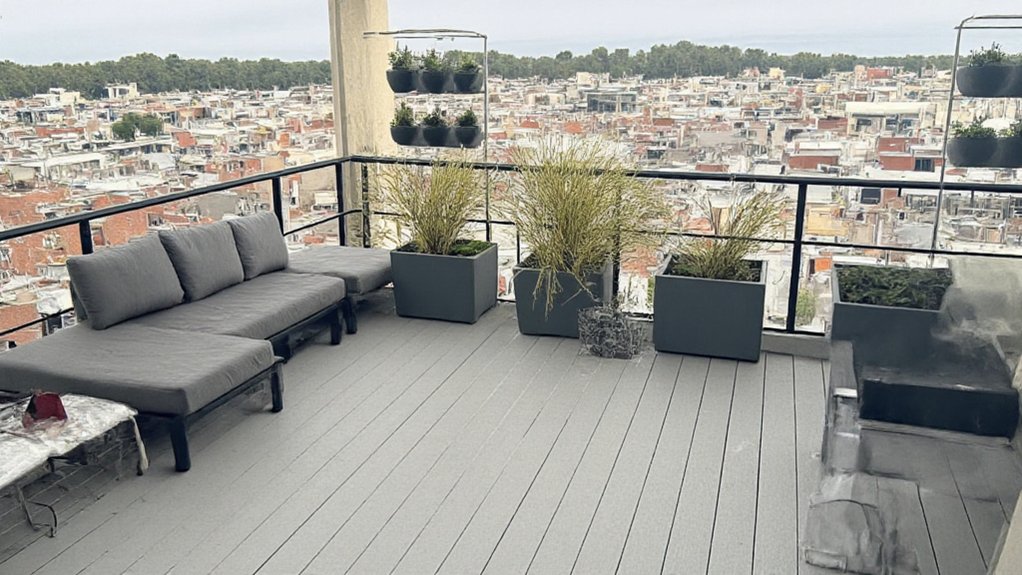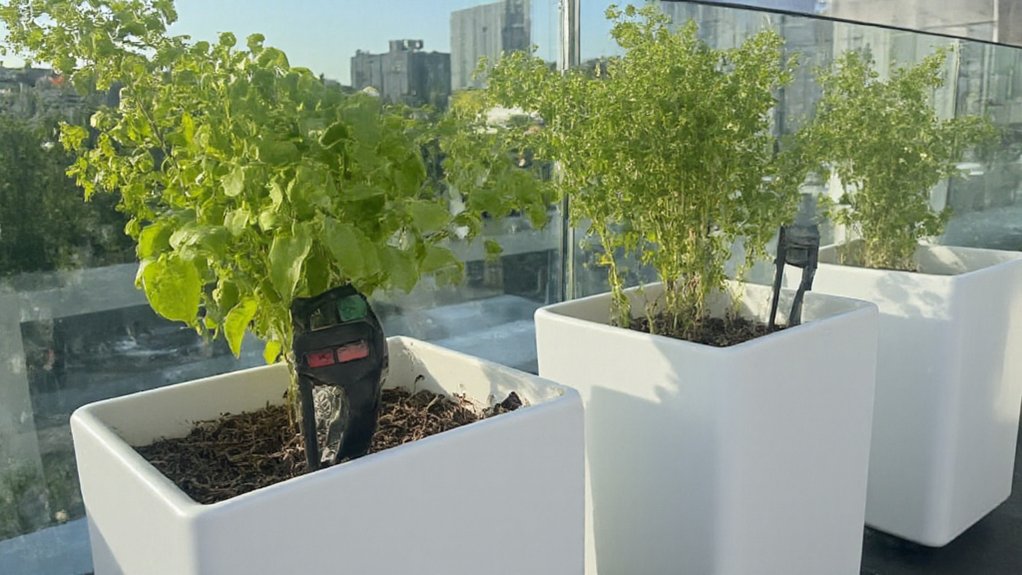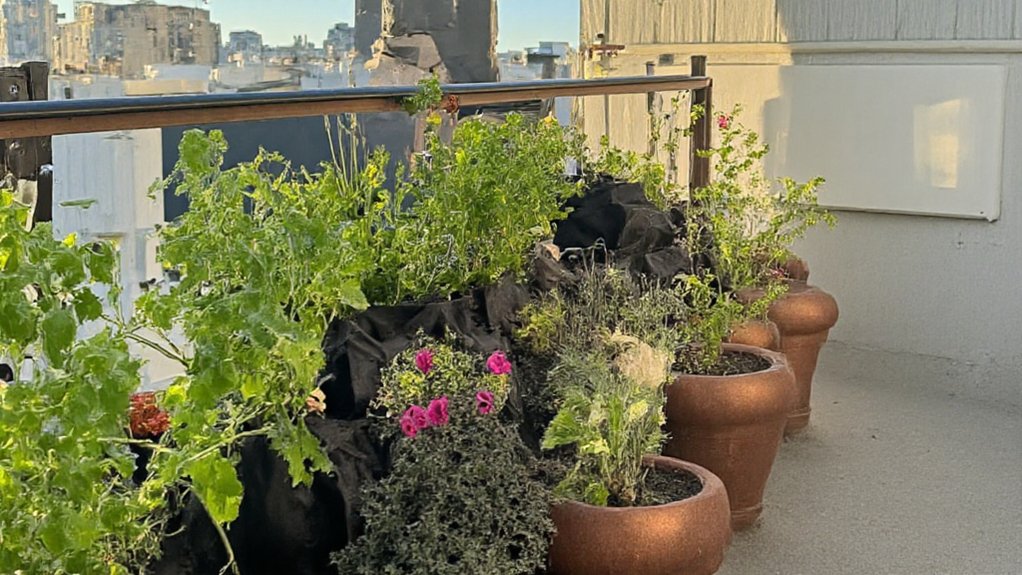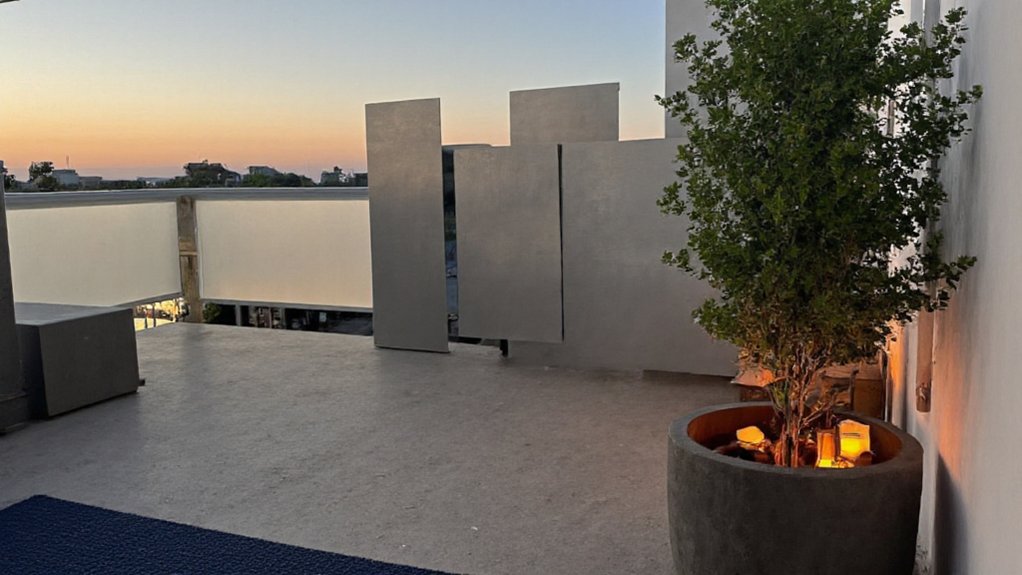Starting Your Low-Maintenance Balcony Landscape****
Did you know that balconies often face harsher conditions than ground-level gardens, with intense wind and sun exposure? You can still create a thriving space by choosing the right approach. Focus on durable plants and smart setups to cut down on care time. Let’s explore how to pick hardy species like succulents, design efficient layouts, and use tools that save effort—stick around for the details!
Contents
Selecting Durable Plants for Your Balcony

Selecting durable plants for your balcony is essential for creating a low-maintenance landscape that thrives in a confined, often exposed environment. Opt for plants that can withstand varying weather conditions, such as wind, intense sunlight, or limited water availability. Hardy succulents, like sedum or echeveria, are excellent choices due to their drought tolerance and minimal care needs. Similarly, ornamental grasses and perennials like lavender or rosemary can endure tough conditions while adding texture and fragrance to your space.
Consider the specific microclimate of your balcony—whether it’s shaded, sunny, or windy—and choose plants accordingly. Native plants or those adapted to your local climate are often more resilient and require less intervention. Additionally, prioritize container-friendly varieties that don’t outgrow their pots quickly, ensuring they remain manageable and healthy with minimal repotting or pruning.
Designing a Practical Layout for Easy Care

Designing a practical layout for a low-maintenance balcony landscape is essential for ensuring easy care and long-term enjoyment. Start by evaluating the available space and prioritizing functionality over complexity. Opt for a simple design that incorporates key elements like seating areas, container plants, or vertical gardens, while leaving enough open space to avoid clutter. Group plants with similar watering and sunlight needs together to streamline maintenance tasks, and consider using self-watering pots or drip irrigation systems to reduce manual effort.
Additionally, choose durable materials for flooring and furniture that can withstand weather changes and require minimal upkeep, such as composite decking or weather-resistant cushions. Position heavier pots or fixed elements along the edges to maximize central space for movement, and avoid overplanting to prevent overcrowding. A well-thought-out layout not only minimizes the time spent on care but also creates a relaxing, organized outdoor space.
Using Smart Containers and Tools

Using smart containers and tools can greatly simplify balcony landscaping by reducing the effort needed for maintenance. Smart containers, such as self-watering pots, come equipped with built-in reservoirs that provide a consistent water supply to plants, minimizing the need for frequent watering. These containers are especially useful for busy individuals or those new to gardening, as they help prevent overwatering or underwatering, ensuring plants thrive with minimal intervention.
Additionally, incorporating tools like moisture meters and automated irrigation systems can further streamline care. Moisture meters help monitor soil conditions, indicating when plants need water, while small-scale drip irrigation systems can be set up to deliver water directly to the roots on a schedule. These tools not only save time but also promote healthier plants by providing precise care tailored to their needs, making balcony gardening both efficient and enjoyable.
Implementing Efficient Watering Solutions

Implementing efficient watering solutions is essential for maintaining a low-maintenance balcony landscape. One of the most effective methods is installing a drip irrigation system, which delivers water directly to the plant roots through a network of tubes and emitters. This system minimizes water waste by reducing evaporation and runoff, ensuring that plants receive a consistent and adequate supply of moisture with minimal effort on your part. Additionally, timers can be added to automate the watering schedule, making it ideal for busy individuals or those who travel frequently.
Another option is to use self-watering pots or containers, which have built-in reservoirs that store water and release it gradually to the plants as needed. These are particularly useful for balcony gardens, as they reduce the frequency of manual watering and help maintain ideal soil moisture levels. By combining these efficient watering solutions, you can create a thriving balcony landscape that requires less time and attention while still looking lush and vibrant.
Adding Decorative Elements With Minimal Upkeep

Adding decorative elements with minimal upkeep is a fantastic way to enhance the aesthetic appeal of a low-maintenance balcony landscape without increasing the workload. Opt for durable, weather-resistant decor such as ceramic or metal sculptures, which can withstand outdoor conditions and require little to no cleaning beyond an occasional rinse. Additionally, consider incorporating decorative pots or planters made from materials like resin or fiberglass, which mimic the look of natural stone or terracotta but are lighter and more resistant to cracking or fading.
Another great option is to use outdoor rugs or wall art designed for exterior spaces, as these can add color and personality while being easy to maintain with just a quick sweep or hose-down. Solar-powered lights or lanterns are also ideal, providing ambiance without the need for wiring or frequent battery changes. By choosing items that are both functional and visually appealing, you can create a stylish balcony space that remains low-effort to care for over time.
